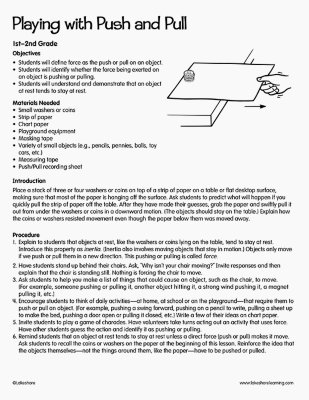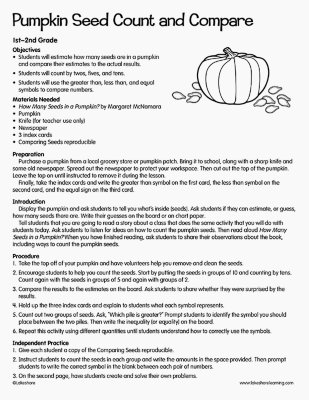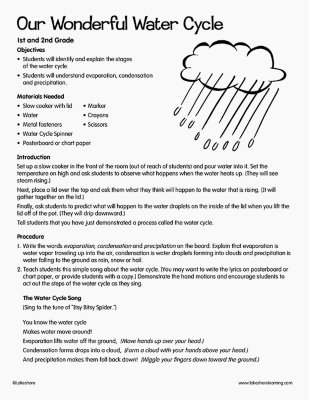Narrow by Grade
- Infant (0)
- Toddler (0)
- Preschool (0)
- Pre-K (4)
- Kindergarten (5)
- 1st (5)
- 2nd (3)
- 3rd (1)
- 4th (3)
- 5th (0)
- 6th & Up (0)
Grade 2nd
Narrow by Age
- 0-18m (0)
- 18-36m (0)
- 3 yrs. (0)
- 4 yrs. (0)
- 5 yrs. (0)
- 6 yrs. (3)
- 7 yrs. (3)
- 8 yrs. (0)
- 9 yrs. (0)
- 10 yrs. (0)
- 11 yrs. & Up (0)
Age
3 results for "table top light table/"
Filters
Clear All
Playing with Push and Pull
1st Grade - 2nd Grade
Objectives Students will define force as the push or pull on an object. Students will identify whether the force being exerted on an object is pushing or pulling. Students will understand and demonstrate that an object at rest tends to stay at rest. Materials Needed Small washers or coins Strip of paper Chart paper Playground equipment Masking tape Variety of small objects (e.g., pencils, pennies, balls, toy cars, etc.) Measuring tape Push/Pull recording sheet Introduction Place a stack of three or four washers or coins on top of a strip of paper on a table or flat desktop surface, making sure that most of the paper is hanging off the surface. Ask students to predict what will happen if you quickly pull the strip of paper off the table. After they have made their guesses, grab the paper and swiftly pull it out from under the washers or coins in a downward motion. (The objects should stay on the table.) Explain how the coins or washers resisted movement even though the paper below them was moved away.
View Lesson PlanPumpkin Seed Count and Compare
1st Grade - 2nd Grade
Objectives Students will estimate how many seeds are in a pumpkin and compare their estimates to the actual results. Students will count by twos, fives, and tens. Students will use the greater than, less than and equal symbols to compare numbers. Materials Needed How Many Seeds in a Pumpkin? by Margaret McNamara Pumpkin Knife (for teacher use only) Newspaper 3 index cards Comparing Seeds reproducible Preparation: Purchase a pumpkin from a local grocery store or pumpkin patch. Bring it to school, along with a sharp knife and some old newspaper. Spread out the newspaper to protect your workspace. Then cut out the top of the pumpkin. Leave the top on until instructed to remove it during the lesson. Finally, take the index cards and write the greater than symbol on the first card, the less than symbol on the second card, and the equal sign on the third card. Introduction Display the pumpkin and ask students to tell you what’s inside (seeds). Ask students if they can estimate, or guess, how many seeds there are. Write their guesses on the board or on chart paper. Tell students that you are going to read a story about a class that does the same activity that you will do with students today. Ask students to listen for ideas on how to count the pumpkin seeds. Then read aloud How Many Seeds in a Pumpkin? When you have finished reading, ask students to share their observations about the book, including ways to count the pumpkin seeds.
View Lesson PlanOur Wonderful Water Cycle
1st Grade - 2nd Grade
Objectives Students will identify and explain the stages of the water cycle. Students will understand evaporation, condensation and precipitation. Materials Needed Slow cooker with lid Water Posterboard or chart paper Marker Water Cycle Spinner Crayons Scissors Metal fasteners Introduction Set up a slow cooker in the front of the room (out of reach of students) and pour water into it. Set the temperature on high and ask students to observe what happens when the water heats up. (They will see steam rising.) Next, place a lid over the top and ask them what they think will happen to the water that is rising. (It will gather together on the lid.) Finally, ask students to predict what will happen to the water droplets on the inside of the lid when you lift the lid off of the pot. (They will drip downward.) Tell students that you have just demonstrated a process called the water cycle.
View Lesson Plan

